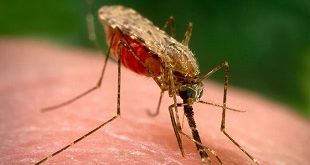
Tourism services are still generally poor and there is a need for investment especially in tour guiding, site interpretation, food and beverage services
Kampala, Uganda | JULIUS BUSINGE | A comprehensive report released by the Petroleum Authority of Uganda has advocated for significant reforms in the tourism and oil and gas sectors to optimize job creation and economic opportunities in Uganda.
The study, unveiled in Kampala on April 11, aligns with the objectives of Uganda’s National Development Plan (NDP) III and Vision 2040, aiming to strengthen the economic interconnections between the two sectors.
Titled ‘Linkages Between Tourism and Oil and Gas Sectors of Uganda,’ the report addresses the crucial interplay between these sectors, particularly in the context of the burgeoning activities in the oil and gas sector.
With the Albertine Graben hosting ten of Uganda’s twenty-two protected areas, the region’s dual role as a center for both biodiversity conservation and resource extraction underscore the urgency of strategic planning and sustainable management.
Tourism services still poor
The study found that tourism services are still generally poor and there is a need for investment, especially in tour guiding, site interpretation, and food and beverage services.
The tourism support services (such as banks, and telecom networks) are available in urban areas and need to be extended to rural areas and remote tourism destinations.
Gaps in the linkages between tourism and oil and gas sectors were identified and included; few visitor stop-over points have been planned and established along the new roads constructed; limited tourism knowledge and capacity among MSMEs and local communities to identify and harness opportunities; limited land use planning to guide tourism; limited analysis and dissemination of information on tourism development opportunities created by the existing and planned infrastructure.
Furthermore, the study found that the workforce in tourism and hospitality establishments consists of few skilled, largely semiskilled, and unskilled personnel.
There is a glaring gap in the quality and quantity of employees’ knowledge and skills in tourism planning, food and beverage service, MICE management, wellness, and more.
In terms of environmental sustainability, the study found that comprehensive attention has been paid to the oil and gas operations areas located in conservation areas (such as Tilenga Project in Murchison Falls National Park) or near wildlife reserves and sensitive ecosystems (such as Kingfisher Project that is adjacent to Lake Albert and key important bird areas). However, less attention has been given to the conservation of biodiversity outside protected areas. Furthermore, it was noted several local government officials and tourism operators in the region were not aware of eco/green certification in tourism.
Recommendations
To enhance the existing linkages and empower the stakeholders to harness the opportunities between the tourism and oil and gas sectors, the report recommends that efforts should be geared toward tourism product development, diversification, and marketing.
The Ministry of Tourism Wildlife and Antiquities, Uganda Tourism Board, Uganda Wildlife Authority, and others should take the lead in enhancing the quality of existing products and developing new products that can appeal to a wider market.
It says an Albertine region marketing should be developed and partnerships should be built to position and market the region as an ecofriendly and quality service destination.
The report also calls for enhancing and developing linkages between tourism and the Oil and Gas Sector. It says lead agencies should undertake comprehensive mapping and profiling of the current and projected linkages and opportunities to support tourism enterprises through incubation centers, especially medium small, and micro enterprises to harness the opportunities. This will require developing an integrated regional sustainable tourism development master plan.
It also calls for human resource capacity building in partnership with tourism training institutions.
A regional Tourism Centre of Excellence should be established to train tutors and personnel to work in tourism and hospitality in the region.

And that an affirmative action strategy should focus on training vulnerable groups and building the capacity of local private sector actors and districts to plan, manage, and deliver quality tourism products and services.
On environmental conservation and sustainability, the report says the lead agencies should restore degraded ecosystems, establish conservation education centers, and develop conservation and sustainability guidelines, especially cultural heritage tourism resources. Emphasis should be placed on supporting tourism enterprises to adopt green tourism practices and attain eco/green certification.
In terms of research and communication, the report recommends that the lead agencies should partner with education and research institutions to generate and share research data that can support resource management, tourism planning, and investment.
“There is a need to develop an Albertine Regional Tourism Satellite Account (TSA) system that will support local governments to collect, analyze, and share data in a timely and harmonized way,” the report reads in part, “A communication strategy should be developed and tourist information and interpretation centers along key tourist routes, key tourist destinations and in major cities and towns established.”
It also says monitoring and evaluation coordination mechanism should be enhanced through regular inspection, monitoring, and evaluation of the development linkages between the tourism and oil and gas sectors, and guide on maintaining and enhancing the mutual co-existence between the two sectors.
This is very crucial given that there is a need to strictly adhere to the proposed mitigation measure given the vast risks identified.
Why the two sectors are critical
Tourism is an important sector in the global, regional, and national economies and the world’s third-largest export industry after fuels, chemicals, food, and automotive products.
It contributed 10.3% of the global GDP (USD 9.6 trillion) in 2019. Travel and Tourism combined account for 1 in 4 of all new jobs created and contributing to 10.3% of all jobs (333 million) in the world.
The report quotes 2019 figures. It says the Tourism Satellite Account (TSA) indicates that a total of 1,542,620 international visitors were received in 2019 generating Shs4.6 trillion (accounting for 20% of Uganda’s export earnings) and 2.4 million domestic visitors generated approximately Shs2.97 trillion. The sector directly supported 1,559,147 jobs (14.7% of total national employment).
In 2019 the sector was affected by the COVID-19 pandemic which led to international tourist arrivals drastically dropping to 473,085 in 2020. However, the sector is steadily recovering with international arrivals increasing to 814,504 in 2022 and the sector is projected to fully recover by 2024.
The Albertine Graben has 10 out of the 22 protected areas (national parks and wildlife reserves) in Uganda which are tourism destinations in Uganda. The region is also recognized internationally as home to the threatened and endemic mountain gorilla, and there are several cultural heritage resources and archaeological and historic sites.
Meanwhile, the oil and gas sector is expected to create several jobs and related opportunities and contribute immensely to Uganda’s economic growth.
Sector players are anticipating investments ranging from US$15-20 billion in the current sector development phase starting February 2022, while also considering the importance of national content and value retention within the country.
The latest figures from the Petroleum Authority of Uganda indicate that oil sector players continue to commit to the National Content agenda with US$7.14 billion approved for investment, of which US$1.914 billion (36%) is committed to Ugandan companies during the development phase, nearing our 40% national content target for this phase.
 The Independent Uganda: You get the Truth we Pay the Price
The Independent Uganda: You get the Truth we Pay the Price


